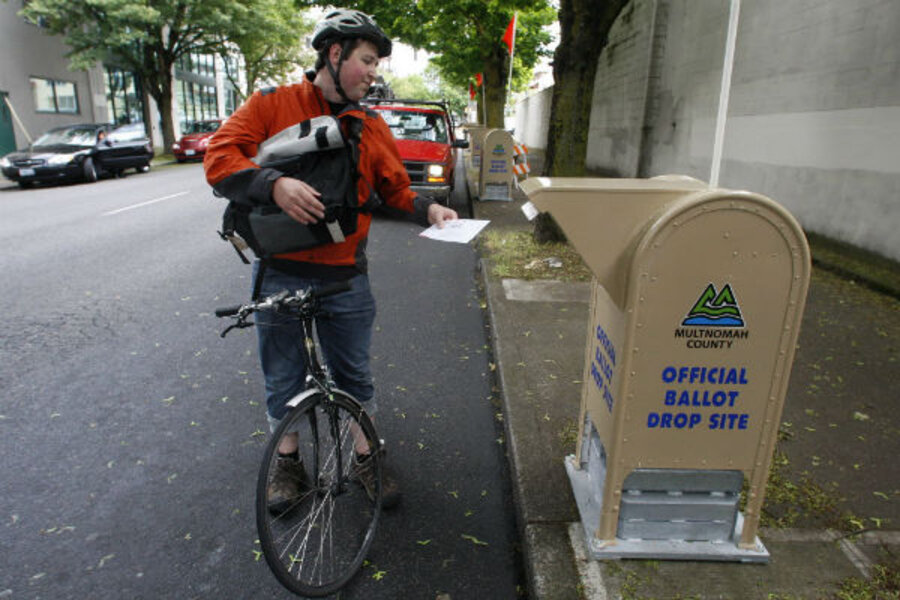Oregon is one of two states that employ a vote-by-mail only system. Voters receive an information pamphlet three weeks before the election, followed a few days later by their ballots. With an average voter turnout of 60.13 – 8.5 percentage points above the national average – the system is working for Oregonians.
“There is absolutely no doubt in my mind that we see high turnout because of vote-by-mail,” says Oregon Secretary of State Kate Brown. “It’s extremely convenient and accessible; it’s secure and cost-effective.”
Oregonians passed a referendum in 1998 to institute the vote-by-mail system – with almost 70 percent approval.
Secretary Brown rejects the criticism that mail-in ballots diminish the sense of civic engagement people may feel standing in line with their fellow citizens on Election Day. She says Oregonians have block parties and talk to their neighbors; issues are discussed in churches and synagogues.
“Civic engagement is much more meaningful and expansive when you have a ballot in hand for 2-1/2 weeks,” Brown says. “Election Day is not just one day – it’s several.”
Another criticism of mail-in ballots is that there is more opportunity for voter fraud. Since 2000, 15 million ballots have been cast by mail in Oregon, but there have been only nine convictions of voter fraud, Brown says. The state takes extensive measures to ensure that ballots are secure: each envelope has a unique barcode, election officials verify every signature, and there are cameras in every election office to monitor the counting. People can also check online to make sure their ballot was counted.
Voter outreach is another factor at play in Oregon, says Michael Slater, executive director of the nonprofit Project Vote and a Portland resident. Campaigns can check to see if people have voted, and encourage them to cast their ballot.
“People knock on my door and ask if I need my ballot delivered,” Mr. Slater says. “It’s a very helpful way to keep people engaged.”






